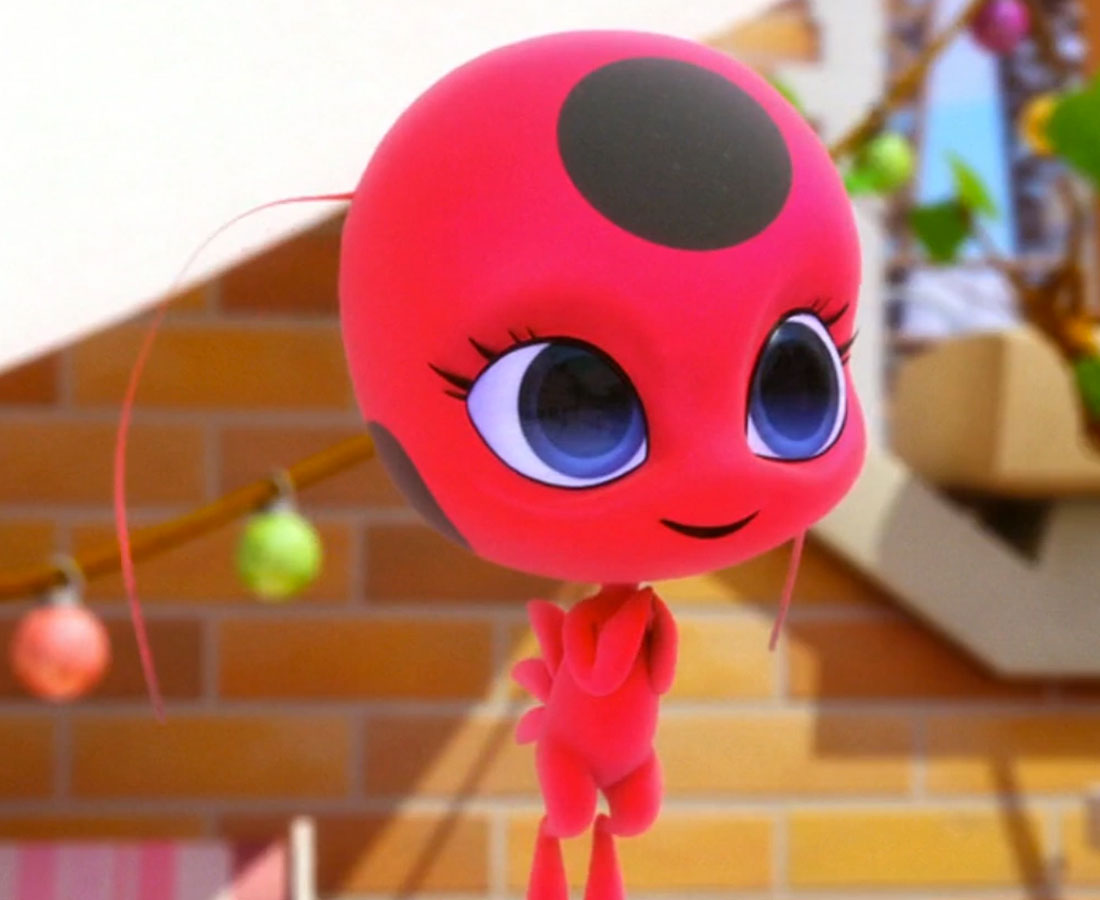Unraveling Tikki Tikki Tembo: A Timeless Tale Of Names And Wisdom
Step into a world where names hold immense power and a simple, yet profound, story has captivated generations. We're diving deep into the beloved classic, "Tikki Tikki Tembo," a picture book that has left an indelible mark on children's literature and the hearts of countless readers. This isn't just a tale of a boy with an extraordinarily long name; it's a narrative rich with cultural insights, lessons on responsibility, and the enduring magic of storytelling.
Published in 1968, "Tikki Tikki Tembo" has transcended its origins to become a staple in homes and classrooms worldwide. Its rhythmic prose and memorable characters make it an instant favorite, while its underlying messages offer valuable food for thought. Join us as we explore the layers of this enchanting book, from its unique narrative structure to its lasting cultural impact, ensuring we understand why this particular story continues to resonate so strongly.
Table of Contents
- The Enduring Legacy of Tikki Tikki Tembo: A Timeless Tale
- Unpacking the Narrative: A Story of Names and Consequences
- The Art of Storytelling: Literary Elements in Tikki Tikki Tembo
- Why Tikki Tikki Tembo Resonates with Generations
- The Impact of Tikki Tikki Tembo on Children's Literature
- Navigating the Broader "Tikki" Landscape (Brief Disambiguation)
- Engaging with Tikki Tikki Tembo Today
- Frequently Asked Questions About Tikki Tikki Tembo
- Conclusion: The Echo of a Long Name
The Enduring Legacy of Tikki Tikki Tembo: A Timeless Tale
"Tikki Tikki Tembo is a 1968 picture book written by Arlene Mosel and illustrated by Blair Lent." This foundational piece of information from our data highlights the book's origins and its place in the literary landscape of the late 1960s. At its core, the book tells the story of a Chinese boy with an exceptionally long name who falls into a well. This seemingly simple premise unfolds into a captivating narrative that explores themes of tradition, caution, and the practical implications of cultural customs.
The book quickly garnered critical acclaim, earning the prestigious Caldecott Honor in 1969 for Blair Lent's distinctive illustrations. This recognition cemented its status as a significant contribution to children's literature, ensuring its presence on bookshelves and in libraries for decades to come. Its enduring appeal lies not just in its engaging plot but also in its unique linguistic rhythm and the universal lessons it imparts. The repetitive nature of the long name, "Tikki Tikki Tembo-no Sa Rembo-Chari Bari Ruchi-Pip Peri Pembo," becomes a melodic chant that children delight in repeating, making the story highly interactive and memorable.
Arlene Mosel and Blair Lent: The Creative Minds
The success of "Tikki Tikki Tembo" is a testament to the collaborative genius of its author, Arlene Mosel, and its illustrator, Blair Lent. Arlene Mosel (1921-1996) was an American author primarily known for her contributions to children's literature. Her background in library science and her passion for folklore deeply influenced her writing. Mosel had a particular talent for adapting traditional tales and infusing them with a fresh, engaging voice suitable for young readers. Her meticulous research into the origins of stories allowed her to craft narratives that felt both authentic and accessible.
Blair Lent (1919-2009) was an American artist and illustrator, celebrated for his distinctive style that often incorporated elements of traditional art forms and intricate details. Lent's illustrations for "Tikki Tikki Tembo" are particularly noteworthy for their delicate linework, muted color palette, and evocative portrayal of ancient China. He skillfully blended realistic elements with a touch of whimsy, creating a visual world that perfectly complements Mosel's narrative. His ability to convey emotion and movement through his drawings brought the characters and setting of the story vividly to life, making the book a visual as well as a literary masterpiece. Together, Mosel and Lent created a work that continues to be cherished for its narrative depth and artistic excellence.
Unpacking the Narrative: A Story of Names and Consequences
The central premise of "Tikki Tikki Tembo" revolves around two brothers in ancient China: the elder, who possesses the incredibly long and revered name "Tikki Tikki Tembo-no Sa Rembo-Chari Bari Ruchi-Pip Peri Pembo," and the younger, whose name is simply "Chang." According to the story's tradition, firstborn sons were given long, honorable names, while subsequent children received short, simple ones. This custom sets the stage for the crucial conflict.
The plot unfolds when Chang falls into a well. His mother immediately sends Tikki Tikki Tembo to fetch the Old Man with the Ladder. However, when Tikki Tikki Tembo arrives, he can only stutter and stumble over his brother's short name, "Chang," making it quick and easy to get help. Chang is rescued without much delay. The real drama begins when Tikki Tikki Tembo himself falls into the well. His mother, in her panic, sends Chang to get help. But when Chang tries to explain to the Old Man with the Ladder that "Tikki Tikki Tembo-no Sa Rembo-Chari Bari Ruchi-Pip Peri Pembo" has fallen into the well, the sheer length of the name causes significant delay. The Old Man struggles to understand, and precious time is lost as Chang tries to repeat the lengthy name. By the time help arrives, Tikki Tikki Tembo has been in the well for so long that he is gravely ill, leading to a long recovery. The story concludes with the moral that this incident is why the Chinese decided to give all their children short names, emphasizing practicality over tradition in matters of life and death.
Cultural Context and Controversies: Beyond the Story
While "Tikki Tikki Tembo" is widely loved, it has also been a subject of discussion and, at times, controversy regarding its cultural representation. The book is presented as a "Chinese folktale," but its origins are not definitively traced to any specific traditional Chinese narrative. Many scholars and cultural critics argue that the story, as presented, is more of a Westernized interpretation or even an invention, rather than an authentic Chinese legend. This raises important questions about cultural appropriation and the responsibility of authors when presenting stories from other cultures.
The idea that Chinese people changed their naming conventions due to a single incident involving a long name is also historically inaccurate. Traditional Chinese naming practices are complex and deeply rooted in cultural values, family lineage, and philosophical beliefs, not simply a reaction to a well accident. Names often reflect aspirations, birth order, or characteristics, and while some names might be longer or more elaborate, the premise of the story simplifying all names due to this particular event is a simplification for narrative purposes rather than a factual representation of history or culture.
Despite these critiques, many still view "Tikki Tikki Tembo" as a valuable tool for teaching children about different cultures, even if it serves as a starting point for deeper, more accurate discussions rather than a definitive historical account. Its enduring popularity suggests that its core message about the practical implications of choices and the importance of clear communication resonates universally, transcending the specific cultural setting it purports to represent. For educators and parents, it presents an opportunity to discuss not only the story's themes but also the nuances of cultural representation and the importance of seeking out diverse and authentic voices in literature.
The Art of Storytelling: Literary Elements in Tikki Tikki Tembo
The literary craftsmanship in "Tikki Tikki Tembo" is a key reason for its lasting appeal. Arlene Mosel employs several effective storytelling techniques that make the book engaging for young audiences:
- Repetition and Rhythm: The most striking element is the repetitive chanting of "Tikki Tikki Tembo-no Sa Rembo-Chari Bari Ruchi-Pip Peri Pembo." This rhythmic repetition creates a musical quality that is highly appealing to children, making the long name easier to remember and fun to recite. It also builds suspense as the reader anticipates the inevitable struggle with the name.
- Clear Cause and Effect: The narrative clearly illustrates the concept of cause and effect. The short name (Chang) leads to quick help and safety, while the long name (Tikki Tikki Tembo) leads to delays and danger. This simple, direct cause-and-effect relationship makes the moral of the story easy for young children to grasp.
- Humor and Exaggeration: The absurdity of the extremely long name and the predicament it creates provides a gentle humor. The exaggerated difficulty of repeating the name, especially in a crisis, adds to the story's charm and memorability.
- Simple Moral: The story delivers a straightforward moral lesson: practicality and efficiency can be more important than tradition, especially in emergencies. It subtly teaches children about the value of clear communication and the potential pitfalls of overly elaborate customs when they impede safety.
- Visual Storytelling: Blair Lent's illustrations are integral to the storytelling. They not only depict the events but also convey the emotions of the characters and the atmosphere of ancient China. The illustrations guide the reader through the narrative, enhancing comprehension and engagement.
Why Tikki Tikki Tembo Resonates with Generations
Beyond its literary techniques, "Tikki Tikki Tembo" connects with readers on several emotional and developmental levels:
- The Power of Names: Children are often fascinated by names – their own, their friends', and those of characters in stories. This book highlights the significance of names in a unique way, prompting discussions about identity and the meaning behind names.
- Relatability of Childhood Mishaps: Falling into a well is a dramatic, albeit rare, event, but the underlying theme of children getting into trouble and needing help is universally relatable. The story taps into a child's understanding of danger and the need for quick action.
- Lessons in Patience and Problem-Solving: The story indirectly teaches about the importance of patience (when waiting for help) and problem-solving (how the situation is eventually resolved). It shows that sometimes, simpler solutions are better.
- Cultural Curiosity: For many children, this book might be their first exposure to a story set in a different culture. While its accuracy is debated, it can spark curiosity about China and its traditions, encouraging further exploration of global cultures.
- The Joy of Language: The rhythmic and repetitive nature of "Tikki Tikki Tembo" makes it a joy to read aloud. This auditory experience is crucial for early literacy development, helping children develop phonological awareness and an appreciation for language.
The Impact of Tikki Tikki Tembo on Children's Literature
"Tikki Tikki Tembo" holds a significant place in the canon of children's literature. Its success paved the way for more diverse cultural stories (even if its own cultural authenticity is debated) and demonstrated the power of a strong, memorable narrative paired with distinctive illustrations. The book's Caldecott Honor status solidified its reputation, placing it among the most highly regarded picture books of its time. It continues to be a staple in elementary school curricula, used to teach about storytelling, cultural differences, and the importance of clear communication.
The book's influence can be seen in the way it encourages a playful approach to language and names. It reminds authors and illustrators of the enduring appeal of a well-told story, even one based on a simple premise. Its legacy is not just in its sales figures but in the countless children who have learned to chant "Tikki Tikki Tembo" and, through that chant, absorbed a subtle lesson about the world around them. It stands as a testament to the fact that a truly engaging children's book can offer layers of meaning and enjoyment for both young readers and the adults who share it with them.
Navigating the Broader "Tikki" Landscape (Brief Disambiguation)
While our primary focus is on the classic children's book, it's worth noting that the name "Tikki" appears in other popular contexts, leading to occasional confusion. It's important to distinguish these separate entities to maintain clarity.
Tikki: The Kwami of Creation
From the provided data, we know: "Tikki is one of the four deuteragonists (alongside Plagg, Alya Césaire and Nino Lahiffe) of Miraculous, Tales of Ladybug & Cat Noir." This refers to the highly popular animated series. "She is the kwami of creation who is connected to the Ladybug Miraculous." In the show, Tikki is a magical, insect-like creature who grants the power of creation to her wearer, Marinette Dupain-Cheng, enabling her to transform into the superhero Ladybug. "With her power, Tikki's wearer can use the earrings to..." transform and use unique abilities. This Tikki is a completely distinct character from the book "Tikki Tikki Tembo," existing in a modern fictional universe.
Tikka Shack: A Culinary Journey
Our data also mentions: "Get delivery or takeout from Tikka Shack Indian Grub at 2427 Cross Pointe Dr in Rock Hill." And, "If you’re a newbie to naan, Tikka Shack is the perfect place to start." This clearly refers to an Indian restaurant, specializing in dishes like "Loaded fries doused with tikka masala, onions, scallions, tomatoes, cilantro covered in sweet and spicy secret spices" and "Delicious, bold, and deep fried boneless chunks of chicken with an Indian..." flavor profile. "Tikka Shack serves up the best in Indian cuisine, while slinging samosas in a friendly..." setting. This "Tikka" refers to a style of Indian cooking, particularly marinated and grilled meat (like Chicken Tikka), and is entirely unrelated to either the children's book or the animated character. It's a culinary experience, not a literary or fictional character.
Engaging with Tikki Tikki Tembo Today
Despite its age and the discussions surrounding its cultural accuracy, "Tikki Tikki Tembo" remains a beloved and widely read book. For new generations, it offers a charming entry point into the world of storytelling. Here's how you can continue to engage with this classic:
- Read Aloud: The book is designed for reading aloud. Encourage children to participate by chanting the long name along with you. This interactive element enhances engagement and makes the story even more memorable.
- Discuss Themes: Use the story as a springboard for discussions about the importance of names, the consequences of actions, and the value of clear communication. Ask children what they would do if they had a very long name.
- Explore Cultural Nuances: For older children, this book can be an excellent starting point for a broader conversation about cultural representation in literature. Research authentic Chinese folktales together to provide a more complete picture of Chinese culture and naming traditions.
- Creative Play: Encourage children to create their own long names or invent stories about why certain things are named the way they are. This fosters creativity and imaginative thinking.
- Compare and Contrast: Read other picture books that feature unique names or cultural themes and discuss the similarities and differences.
The enduring appeal of "Tikki Tikki Tembo" lies in its simple yet powerful narrative that transcends its specific setting to deliver universal lessons. Its rhythmic prose and memorable characters ensure that it continues to be a favorite among children and a cherished part of many family libraries.
Frequently Asked Questions About Tikki Tikki Tembo
Here are some common questions people have about the book "Tikki Tikki Tembo":
- Is "Tikki Tikki Tembo" a real Chinese folktale?
While presented as a Chinese folktale, its direct origins in traditional Chinese folklore are debated. Many scholars suggest it's a Western adaptation or invention, rather than an authentic, historical Chinese legend. It's best viewed as a story inspired by the idea of folktales rather than a direct translation of one.
- What is the moral of "Tikki Tikki Tembo"?
The primary moral is about the practical implications of choices, particularly regarding names and communication. It suggests that practicality and efficiency can sometimes be more important than tradition, especially in matters of safety and urgency. It also highlights the importance of clear and concise communication.
- Who wrote and illustrated "Tikki Tikki Tembo"?
The book was written by Arlene Mosel and illustrated by Blair Lent.
- When was "Tikki Tikki Tembo" published?
It was published in 1968.
- Why is the long name so important in the story?
The long name is central to the plot as it directly causes the delay in getting help when Tikki Tikki Tembo falls into the well. This delay highlights the practical difficulties that can arise from overly elaborate traditions, especially in a crisis.
- Is the book appropriate for all ages?
It is primarily a picture book suitable for young children (preschool to early elementary). For older children, it can be a starting point for discussions about cultural representation and the origins of stories.
Conclusion: The Echo of a Long Name
From its distinctive rhythmic prose to its memorable illustrations, "Tikki Tikki Tembo" has carved out a unique and enduring niche in children's literature. Published in 1968, this story of a Chinese boy with an incredibly long name who falls into a well continues to enchant and educate. It serves as a captivating introduction to the concept of names, the consequences of actions, and the timeless importance of clear communication.
While discussions about its cultural authenticity offer valuable opportunities for deeper learning, the core narrative of "Tikki Tikki Tembo" remains a powerful tool for engaging young minds. Its ability to spark curiosity, encourage participation, and deliver a simple yet profound message ensures its place as a beloved classic. We encourage you to revisit this delightful tale, share its unique rhythm with the next generation, and perhaps even ponder the power of names in your own life. What's your favorite part of "Tikki Tikki Tembo"? Share your thoughts in the comments below!

Tikki | Wikia Miraculous Ladybug | Fandom

Tikki | Miraculous Ladybug Fandon Wiki | Fandom

Conoce todo sobre Tikki el kwami de Ladybug - Bandai México